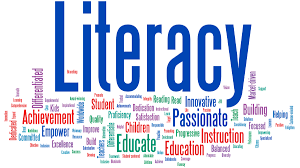Literacy level and educational attainment are vital indicators of development in a society. Attainment of universal primary education which was one of the Millennium Development Goals of the United Nations to be achieved by the year 2015 has not been fulfilled by India. Planning Commission also targeted in the The 12th Five Year Plan (2012-2017) aims at an increase in literacy rates to. 100 per cent . Literacy rate and educational development are considered to be key variables a acting demographic indicators like fertility, mortality (especially infant mortality) rate and migration. It greatly contributes in improving quality of life, particularly with regard to life expectancy, infant mortality, learning levels and nutritional levels of children. Higher level of literacy and educational development lead to greater awareness on the one hand and help people in acquiring new skills on the other.
As per the Census 2011, in India 77,84,54,120 persons have been counted as literates. Among all literates, 33,42,50,358 are females, whereas 44,42,03,762 are males. The literacy rate of India in 2011 is 74.0 per cent. Literacy rate among females is 65.5 per cent whereas the literacy rate among males is 82.1 per cent.
The slower progress made in the reduction of the number of non-literate females during the last decade can be attributed to relatively lower participation rate and higher dropout rate of girls at the primary level of education.
“21A. Right to educaton.-
The State shall provide free and compulsory educaton to all children of the age of six to fourteen years in such manner as the State may, by law, determine.”
Article 45 was consequently substituted to:
“45. Provision for early childhood care and educaton to children below the age of six years.-
The State shall endeavour to provide early childhood care and educaton for all children untl they complete the age of six years.”
Finally, a new clause (k) was introduced in Artcle 51A, defning Fundamental Dutes of the citzens, as below:
“(k) who is a parent or guardian to provide opportunities for education to his child or, as the case may be, ward between the age of six and fourteen years.”
In India, like any other place, illiteracy is a function of poverty, with the concentration of illiterate being found in rural areas. Certain religious minorities and scheduled castes and tribes have much higher levels of adult illiteracy, again especially among women. Illiterate adults struggle with unemployment, or are relegated to degrading jobs, oppressed by employers and moneylenders, thus being further sucked into the vortex of poverty and exploitation.
Once the literacy rate concern is addressed there is an immediate need for creating jobs as India is expected to have 300 million more labor force by 2025. Strong policies to create employment are needed as more labor force enters the economy. To do so there is a strong need to have tax reforms and other supply-side policies as demand side policies involve a lot of social-cost and hence not suitable for long-run. India today faces unemployment at 9.4%, if strong and effective measures to create employment are not taken then the number of unemployed people will only increase with the increase in the labor force. Thus effective policies to create employment are a must for India as these will help in the increase in the labor productivity which otherwise might not be utilized and thus hampering India’s growth in the long run.
Sarva Shiksha Abhiyan
• Government of India’s fagship programme for Universalizaton of Elementary Educaton (UEE)
• Modifed in 2009-10 to comply with the provisions of the RTE Act making “free and compulsory educaton” to children of 6-14 years age group, a Fundamen- tal Right
• Implemented in partnership with State Governments to cover the entre coun- try and address the needs of 192 million children in 1.1 million habitatons
• Seeks to:
- Open new schools in habitations which do not have schooling facilities Strengthen existing school infrastructure through provision of additional class rooms, toilets, drinking water, maintenance grants and school improvement grants
- Provide additional teachers in existing schools with inadequate teacher strength
- Improve the ability of existing teachers by extensive training, grants for developing teaching-learning materials and strengthening the academic support structure at the Cluster, Block and District level.
- Provide quality elementary education including life skills and emphasizes education of girls and children with special needs (CWSN)
- Provide computer education to bridge the digital divide
“Saakshar Bharat” is the flagship adult education program of the Government that was started in 2009. It is the successor to the National Literacy Mission which was started in 1988, pursuant to adoption of the NEP 1986. The program is being implemented in the rural areas of 410 Districts of India with below 50% rate of literacy of women, according to the 2001 census, and Districts affected by left wing extremism. The target is to make literate 70 million adults (15-35 years). The principal aims are to impart functional literacy and numeracy to non-literates, helping such persons acquire equivalency to formal education, providing skill development training to neo-literates and also making available opportunities for their continuing education.
GPSC Notes brings Prelims and Mains programs for GPSC Prelims and GPSC Mains Exam preparation. Various Programs initiated by GPSC Notes are as follows:-- GPSC Mains 2025 Tests and Notes Program
- GPSC Prelims Exam 2025- Test Series and Notes Program
- GPSC Prelims and Mains 2025 Tests Series and Notes Program
- GPSC Detailed Complete Prelims Notes

